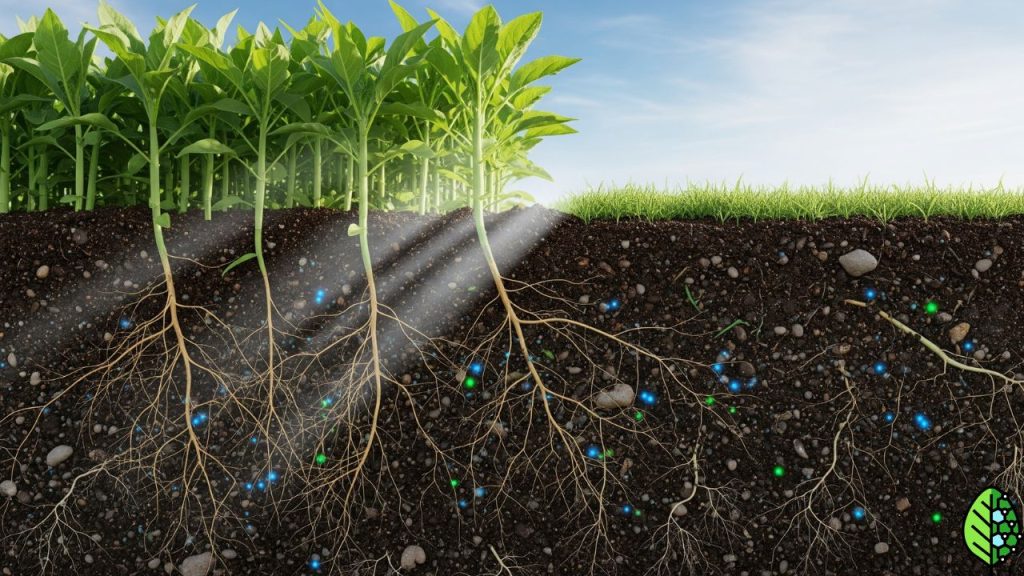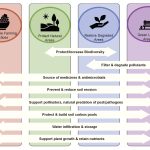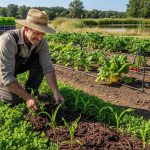Imagine a world where the very ground beneath your feet holds the secret to a more stable climate. Yes, the soil in your backyard or local park could be a powerful ally in the fight against climate change.
This isn’t just a theory; it’s a growing reality that scientists and farmers are embracing. But what does soil health really mean, and how can it possibly influence the climate’s resilience? If you’ve ever wondered how something as simple as dirt could hold such potential, you’re in the right place.
We’re going to unravel the fascinating link between soil health and climate resilience. Get ready to discover how you can play a role in this environmental revolution by understanding and nurturing the soil around you.

Importance Of Soil Health
Healthy soil supports climate resilience by storing carbon and regulating water. It helps plants withstand extreme weather. This vital connection enhances ecosystems and reduces environmental impacts.
The importance of soil health in the context of climate resilience cannot be overstated. Healthy soil is the foundation of sustainable agriculture and a key player in combating climate change. When soil is rich in nutrients and organic matter, it not only supports plant growth but also acts as a carbon sink, absorbing excess CO2 from the atmosphere. As you consider the impact of climate change, ask yourself: is the soil around you healthy enough to withstand environmental shifts?
Why Soil Health Matters
Think of soil as the Earth’s digestive system. It breaks down organic materials, recycles nutrients, and supports life. Healthy soil improves water retention, reducing the need for irrigation. This is crucial during droughts, helping your crops survive when water is scarce.
Building Resilient Ecosystems
Healthy soil leads to resilient ecosystems. It supports diverse plant life, which in turn attracts a variety of insects and animals. You create a balance that can withstand pests and diseases naturally. Have you noticed your garden thriving without pesticides? That’s the power of healthy soil.
Impact On Climate Change
The relationship between soil and climate is symbiotic. Soil can sequester carbon, helping to mitigate climate change. When you maintain soil health, you contribute to reducing greenhouse gases. Imagine the impact if every garden and farm adopted practices that enhance soil health.
Practical Steps To Improve Soil Health
Start with composting. Add kitchen scraps and yard waste to build rich, organic matter. Rotate your crops to prevent soil depletion. Consider cover crops; they protect soil from erosion and add nutrients. Have you ever tried planting legumes? They enrich the soil with nitrogen naturally.
Challenges And Solutions
Improving soil health isn’t without challenges. Soil erosion and pollution can degrade its quality. You can tackle these issues by planting trees and shrubs to hold soil in place and using organic fertilizers. Are you prepared to take steps that ensure your soil stays fertile and robust?
Soil health is a critical factor in climate resilience. By nurturing the soil, you play a role in creating a sustainable future. How will you contribute to this vital effort?

Soil’s Role In Climate Adaptation
Think of soil as more than just dirt under your feet. It’s a critical player in climate adaptation. Healthy soil acts like a sponge, absorbing water and reducing flooding. When soil is managed well, it stores carbon and helps fight climate change. As you learn more about soil’s capabilities, you might find unexpected ways to contribute to climate resilience.
Water Retention And Flood Mitigation
Healthy soil has the ability to retain water, which can prevent flooding in your area. When soil is rich in organic matter, it acts like a sponge, holding onto moisture during heavy rains. This means less runoff and erosion, which can save your home or fields from flood damage.
Imagine walking through a garden after a rainstorm. The soil under your feet feels firm, not soggy. That’s because well-managed soil efficiently absorbs rainwater, preventing it from pooling or causing floods. By improving soil health, you can help protect your community from flood risks.
Carbon Sequestration In Soil
Did you know that soil can capture and store carbon? This process, known as carbon sequestration, helps reduce greenhouse gases in the atmosphere. When you enhance soil health, you increase its ability to sequester carbon, making a positive impact on climate change.
Consider adding compost to your garden. This simple act boosts the soil’s organic matter, enhancing its capacity to store carbon. Each time you enrich your soil, you contribute to a global effort to combat climate change. How could your daily gardening habits play a role in climate resilience?
Soil Biodiversity And Ecosystem Support
Healthy soil is teeming with life, supporting a diverse range of organisms. These organisms play a vital role in ecosystem stability and resilience. By fostering soil biodiversity, you help ecosystems adapt to changing climates.
Imagine the soil as a bustling city, with millions of inhabitants working together. When you support soil biodiversity, you’re enhancing this collaborative environment, making ecosystems more robust and adaptable. How might this unseen community influence your approach to environmental stewardship?
Practical Steps To Improve Soil Health
Improving soil health doesn’t require drastic measures. Start small by reducing chemical fertilizers and opting for natural alternatives. You can also practice crop rotation and cover cropping to enhance soil structure and fertility.
Think of your backyard as a starting point for change. Simple actions like mulching or composting can transform your soil’s health. By taking these steps, you not only improve your garden but contribute to broader climate resilience. What practical changes can you make today to improve soil health?
Practices For Enhancing Soil Resilience
Healthy soil boosts climate resilience by retaining water and nutrients. Practices like crop rotation and organic matter addition enhance this resilience. These methods improve soil structure and fertility, supporting ecosystems and reducing erosion.
Enhancing soil resilience is crucial for building climate resilience. Soil acts as a buffer against extreme weather conditions, aiding in water retention and carbon sequestration. By adopting specific practices, you can boost soil health and contribute to a more sustainable environment.
1. Cover Cropping
Planting cover crops can significantly enhance soil resilience. These crops, like clover or rye, protect the soil from erosion and help retain moisture. As a bonus, they also add organic matter, which improves soil structure and fertility.
2. Crop Rotation
Rotating crops prevents pest and disease build-up, maintaining soil health. This practice also diversifies soil nutrients, reducing the need for chemical fertilizers. Imagine a garden where each year brings new life and balance—crop rotation brings this vision to reality.
3. Reduced Tillage
Reducing tillage minimizes soil disturbance. This helps maintain soil structure and enhances water infiltration. Less tillage means less fuel usage and a smaller carbon footprint, benefiting both your land and the planet.
4. Organic Amendments
Adding organic materials like compost boosts soil organic matter. This improves water retention and nutrient availability. Picture your soil as a living entity that thrives on organic nourishment.
5. Agroforestry Practices
Integrating trees into agricultural systems provides multiple benefits. Trees enhance biodiversity and protect against wind erosion. Agroforestry can be a game-changer for both your land’s health and productivity.
6. Mulching
Applying mulch keeps soil temperature steady and reduces evaporation. It also suppresses weeds, allowing your crops to flourish. Consider how a simple layer of mulch can transform your soil’s resilience.
How can you implement these practices in your garden or farm? What steps can you take today to ensure your soil remains healthy and resilient? By incorporating these practices, not only do you enhance soil health, but you also contribute to a more resilient ecosystem.
Conclusion
Soil health plays a vital role in climate resilience. Healthy soil absorbs carbon, reducing greenhouse gases. It also retains water, preventing floods and droughts. Plants grow better in nutrient-rich soil, supporting food security. Investing in soil health benefits the environment and communities.
Farmers, governments, and individuals can all contribute. Simple actions like composting and crop rotation help improve soil. Protecting soil today ensures a sustainable future. Let’s nurture our soil for a resilient planet.



